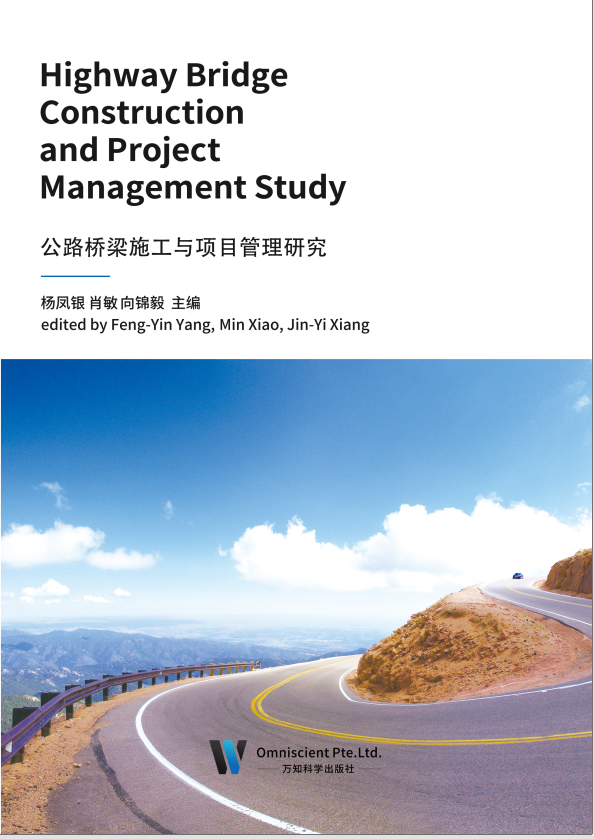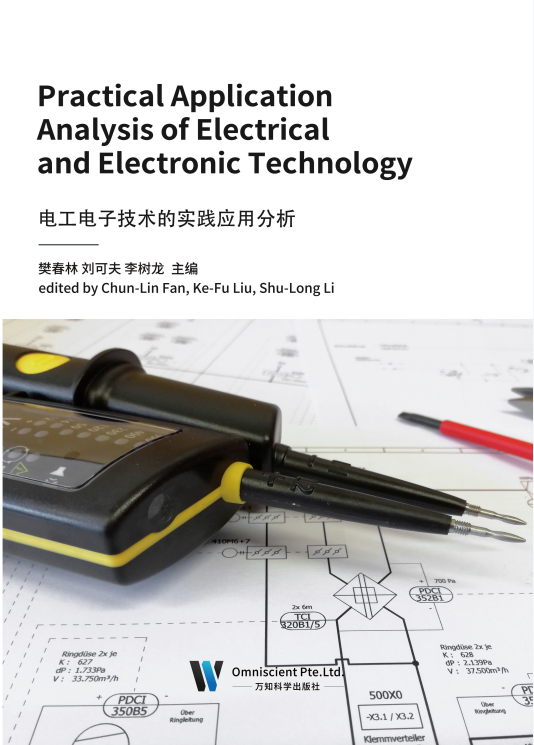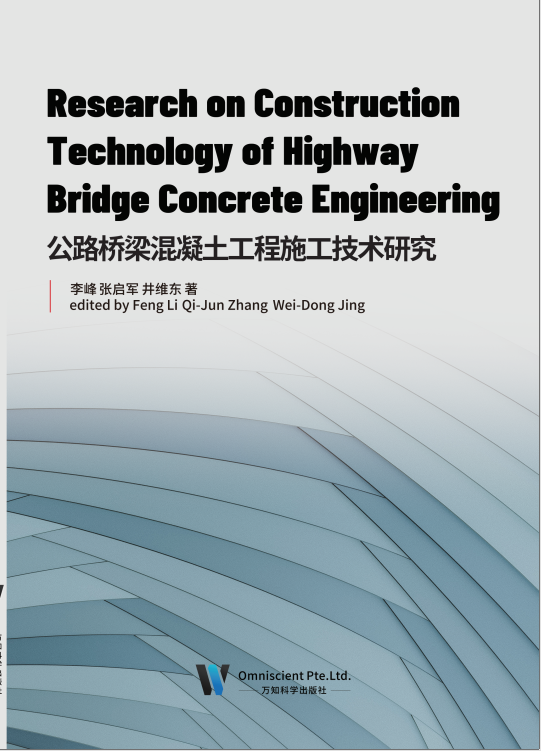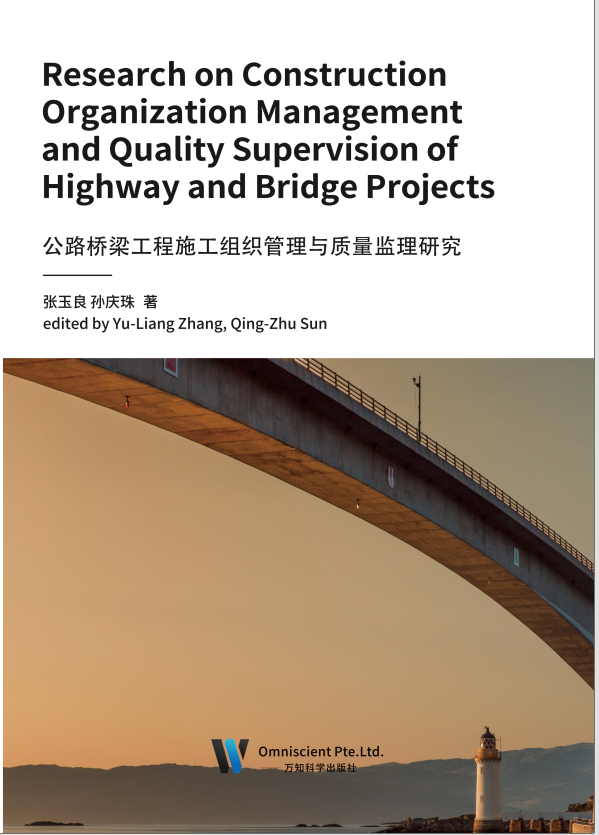
社会主义建设中发展交通运输业极为关键,不但可以改善民生,确保出行方便,而且有助于经贸往来,从这也就能看出公路桥梁工程重要性。公路桥梁施工质量备受关注,因为其决定着交通出行的可靠与安全,假如施工质量存在弊病,运行中必然会导致事故,而且难以控制,给人民群众人身造成伤害,威胁财产安全。公路桥梁项目管理有众多分支,施工项目管理涵盖其中,是极为重要的部分。这个部分的管理主要是保障工程施工有序进行,各项工作都能按照计划开展,使整个施工过程安全顺利,为实现项目管理目标保驾护航。
本书分为九个章节,从施工和管理角度对公路桥梁工程的各个环节和要点进行了详细的分析与阐述,发现其中存在的各种问题,并提出了相应的建议、措施和方法,从而为公路桥梁工程事业发展贡献一份力量。

随着国家经济的快速发展,社会水平不断提高,进一步提升了人们的生活水平。其中,公路基础性的建设逐渐增多,方便人们出行的同时,承受的压力也在逐步增多。因此,需要相关的公路施工技术人员在建设公路桥梁时,注重对公路中施工质量的管理与控制,从而保证公路桥梁的安全性和稳定性。因此,本书就公路桥梁施工技术的质量控制进行相关论述。
公路桥梁施工在整体开展的过程当中,需要具有高效和高水平的施工技术,通过将公路桥梁施工技术和合理的体制进行充分结合,能够保证公路桥梁的结构完整性和科学性。现阶段,我国公路桥梁工程得到了快速发展,人们对于施工技术的要求越来越高,公路在实际施工的过程当中需要充分地了解公路的桥梁结构,经过相应的探讨之后,制定完善的施工方案,在整体的基础之上不断强化施工项目的效益。
本书主要对公路桥梁施工技术与质量控制进行研究探讨。本书分为上下两篇,上篇对公路桥梁的施工技术进行详细讲解,下篇对公路桥梁的质量控制进行深入研究。当下,对公路桥梁施工技术控制与质量管理要点的研究需要在设计技术方案的过程中结合实际施工特点,然后根据技术控制和质量管理进行统一的研究,制定出合理有效的实施方案。

随着科学技术的发展,电工电子技术的应用遍及生产领域和人类生活的各个角落,对国民经济发展及生活水平的提高都具有至关重要的作用。电工电子产业是与经济社会发展和人民生活息息相关的基础产业,推动电工电子产业的创新和发展具有重要意义。在信息时代,电工电子技术开辟了一个新的发展领域。如果我们能有效地抓住机遇,就能有效地提高我国电子电工技术水平,促进我国经济社会的进步。因此,我们要抓住信息时代电子电工技术的新特点,解决电力电子技术产业发展中的若干问题,采取科学的战略发展计划,从而提高电力电子产业适应信息时代的能力。
电工电子技术的学习,可以获得电工、电子技术及电气控制等领域必要的基本理论、基本知识和基本技能,掌握电工电子技术的基本分析计算方法和应用技巧,培养分析问题和解决问题的能力。
本书在编写过程中以服务教育为指导思想,力求突出特色和编写质量,注重强化以下基本内容。
第一,体系完整,内容精选,突出应用,为架构电工电子技术知识体系。
第二,语言精练,简明扼要,通俗易懂。尽量减少理论论证和公式推导,力争以较少的篇幅获得电工电子技术必备的基本理论、基本知识和基本技能。
第三,在电子技术讲解过程中,淡化电路的内部结构,强调电路的外部特性、功能及应用。
第四,强化工程概念,列举工程实例,增强实用性,内容丰富,注重工程能力的培养。
本书采用理论与实践相结合的方法,简要对电子技术的理论进行概述,进一步指出当前我国在电子技术方面存在的问题,并结合具体的电工实践应用,提出了相应的解决对策及建议,最后总结电工电子技术在实际应用中应注意的事项及原理。本书适合电工电子技术理论及实践应用研究者使用。

公路桥梁是典型的基础设施,对于交通运输而言,公路桥梁也是核心枢纽,不仅关系经济社会的流通水平,对于人们的交通出行也有着深刻影响,公路桥梁在整个社会发展中,起着牵一发而动全身的作用。混凝土施工是影响公路桥梁质量的重要环节,密实程度对施工质量有着直接的影响,对于不同施工环节,应当严格按照标准要求进行操作。当前公路桥梁施工中,预应力混凝土施工技术有着广泛应用,现代预应力混凝土生产工艺是由高强度钢材及混凝土组成的,很好地满足了快速发展的公路桥梁施工需要,但在实际施工中,还存在着比较多的问题。
较为容易发生的混凝土质量问题有表面接缝交错、裂缝、麻面及凹凸不平等,一般是以斑纹、层印、空洞等现象呈现出来。导致混凝土出现这些质量问题的原因相对复杂,混凝土原材料质量是否合格、施工技术应用是否精细等都会影响质量水平。混凝土表面裂缝问题是由于没有科学把握水泥与水的混合比例,水泥偏多,水不够,在施工当中保养没有跟上。蜂窝问题是因为振捣不够,粗粒之间的空隙没有用浆液填满。麻面主要出现在具体施工中,模板的表面润滑明显不够,这样就导致模板吸收了过量的水分。露筋主要发生在浇筑阶段,处于保护层的混凝土没有很好地进行振捣,垫块出现了一定的位移,漏振也会导致这种问题的发生。
本书首先对公路桥梁工程施工前的准备工作进行了简要的讲述,随后,对与公路相关的基础知识展开了说明,紧接着重点就公路桥梁工程施工中的关键技术等做了全面而系统的研究,旨在为有需要翻阅该方面资料的读者提供可借鉴的内容。

随着我国市场经济体制的建立和经济法规的逐步完善,公路建设的管理也纳入法制化的轨道。经过多年的实践和总结,我国在公路工程的项目管理方面基本上形成一套较为系统的理论、经验和方法,造就一支庞大的工程项目管理队伍,建成一大批工程项目管理成功的公路工程项目,为我国的公路建设作出了巨大贡献。
施工组织设计是指导工程项目投标、施工准备和组织施工的全面性技术文件。在工程项目管理中依据施工组织设计统筹全局,协调施工过程各层面工作,可保证顺利完成合同规定的各项任务,实现项目的管理精细化、运作标准化、方案先进化,效益最大化。编制和实施施工组织设计已成为我国建筑施工企业一项重要的技术管理制度,也是施工企业优势技术和现代化管理水平的重要标志。
如何保证顺利完成工程项目,这给工程技术人员制定施工组织设计提出了较高的要求。为解决工程技术人员在工作中面临的实际问题,本书以公路桥梁工程的施工组织设计为实例,较全面、详细地介绍施工技术和施工组织设计编制的方法及内容,结合工程实践中的研究成果,重视理论和实践相结合。
本书撰写中力求体现以应用能力为核心,以解决实际问题为目标,紧密联系公路工程实际,及时反映交通行业对公路工程技术人员的要求,力争使内容达到:适应当前工作实际需要,加强内容的先进性、针对性和实用性;适应宽口径复合型人才培养的需要,理论和实践并重。主要内容包括:桩基的结构设计、桩基的施工、地基处理、公路工程监理综述、公路工程监理招投标与合同管理、公路工程组织协调与工地会议、市政工程建设项目进度管理、市政道路工程施工现场综合管理、市政工程建设项目风险管理、市政工程建设项目造价管理。
本书可作为编制公路桥梁工程施工组织设计的依据,也可作为工程技术人员工程管理参考用书和学习资料,相信会有很好的参考价值。